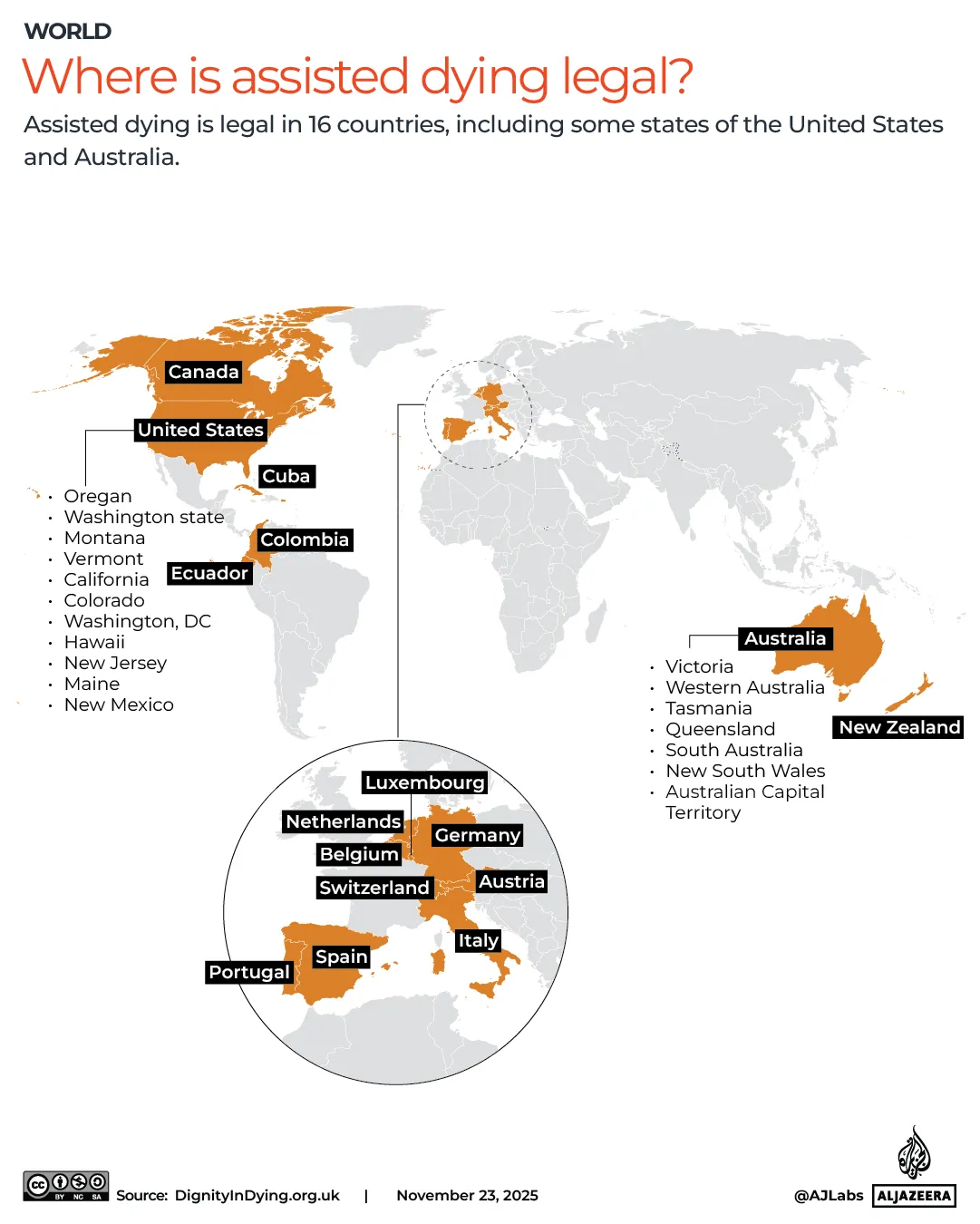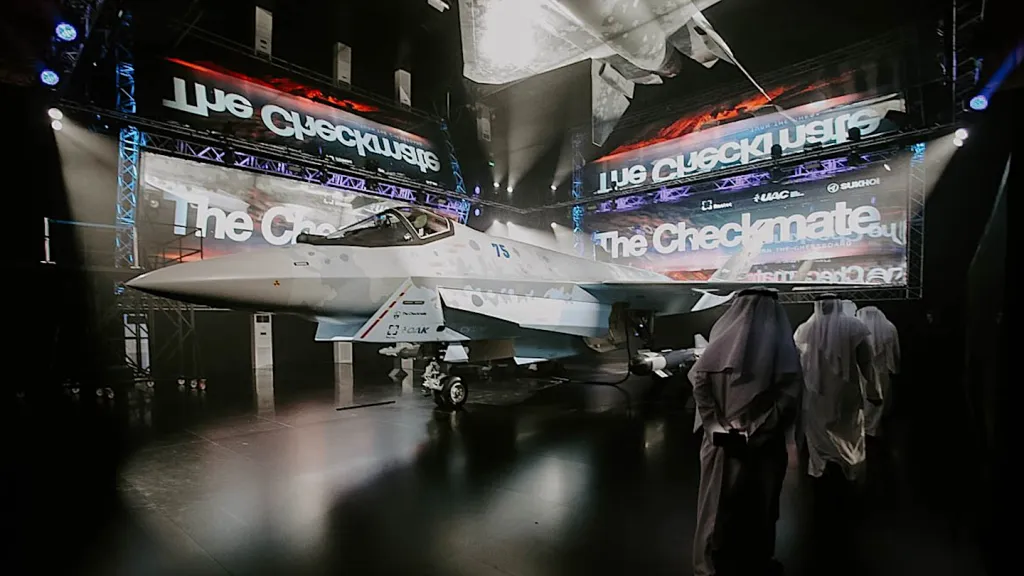Slovenia referendum: Where is assisted dying legal? | Health News
Slovenia is voting on whether to legalise assisted dying for some terminally ill adults after other European countries have made the change.
The parliament of the small European Union nation passed a euthanasia bill in July, but a citizens initiative, led by right-wing politician Ales Primc, forced the referendum on Sunday.
Recommended Stories
list of 4 itemsend of list
The law will be rejected if at least 20 percent of participating voters oppose the bill. Slovenia has an electorate of 1.69 million people.
Supporters of the bill said it will alleviate unnecessary pain. Those against said society should care for the sick, not help them die.
Several European countries – including Austria, Belgium, the Netherlands and Switzerland – already allow terminally ill people to receive medical help to end their lives.
What are the Slovenes proposing?
Under the disputed law, which was set to take effect this year, lucid but terminally ill patients would have had the right to die if their suffering had become unbearable and all other treatment options had been exhausted.
The legislation is similar to the assisted dying bill passed by the United Kingdom Parliament in June. Britain’s bill allows assisted suicide for terminally ill adults with less than six months to live, the approvals of two doctors, judicial oversight and self-administration of the medication.
Slovenia’s law would require the approval of two doctors but also cooling-off periods and self-administration of the medication.
About 54 percent of citizens back the legalisation of assisted dying, almost 31 percent oppose it and 15 percent are undecided, according to a poll published this week by the Dnevnik daily based on 700 responses. In June 2024, 55 percent backed the law.
What are supporters saying?
Prime Minister Robert Golob urged citizens to back the law “so that each of us can decide for ourselves how and with what dignity we will end our lives”.
Marijan Janzekovic, an 86-year-old who lives in the town of Sveti Tomaz near the capital, Ljubljana, also supports the bill.
His wife, Alenka Curin-Janzekovic, was in pain from diabetes-related illnesses before she ended her life at a suicide clinic in Switzerland in 2023.
“She was in a wheelchair … and in pain so bad my heart hurt just by watching her,” he told the Reuters news agency.
What do opponents think?
The main political group opposing the law, called Voice for the Children and the Family, has accused the government of using the law to “poison” ill and elderly people.
Opponents said the law is inhumane and violates Slovenia’s Constitution, which declares human life inviolable.
Elsewhere, Slovenian Catholic Archbishop Stanislav Zore said the state should focus on palliative care instead.
“Let’s care for the sick and dying but not offer them suicide,” he said. The Catholic Church is opposed to euthanasia.
What other countries practise assisted dying?
Assisted dying is already permitted in Australia, New Zealand, Canada, several states in the United States, the Netherlands, Belgium, Luxembourg, Austria, Germany, Portugal, Spain and Switzerland.
In Australia, New Zealand, Canada and several US states, assisted dying laws are generally framed around medical aid. These jurisdictions typically require that patients be terminally ill, mentally competent and assessed by two independent doctors.
In many of these countries, the patient must self-administer lethal medication rather than have a doctor provide it directly. These regimes prioritise patient autonomy and strict procedural safeguards, such as waiting periods.
In the Netherlands, Belgium, Luxembourg, Spain and Portugal, the approach to assisted dying is permissive. Active euthanasia or doctor-administered treatment is legal under defined conditions of unbearable suffering, even if the patient is not terminally ill.
In Germany, Austria and Switzerland, only assisted suicide is legally tolerated as opposed to active euthanasia. Switzerland is an outlier insofar as there is no dedicated regulatory regime for euthanasia, meaning nonresidents may access the service via organisations.

Which other countries are currently debating assisted dying laws?
In May, France’s National Assembly approved a “right-to-die” bill. The legislation would allow adults over 18 who are citizens or residents and suffer from incurable illnesses and “intolerable” physical or psychological suffering to request lethal medication.
Under the bill, a medical team must assess the patient’s condition before a mandatory reflection period before the prescription of a lethal substance. If the patient is physically unable to self-administer, a doctor or nurse may assist.
The proposal excludes people with severe psychiatric conditions or neurodegenerative disorders like advanced Alzheimer’s disease. The bill now has to go to the Senate and must return to the National Assembly for a second reading before it could become law.
Elsewhere, Britain’s lower house voted to legalise assisted dying in June. The House of Commons narrowly voted in favour of the Terminally Ill Adults (End of Life) Bill, marking a major step towards legalising assisted dying in England and Wales.
The bill would allow mentally competent adults with a prognosis of less than six months to live to request medical help to end their lives, subject to assessments by two doctors and a panel including a psychiatrist, a lawyer and a social worker.
The legislation is not yet law. It must still get through the House of Lords, where it will be further scrutinised and may be amended. If it does become law, the timeline for implementation may not be until 2029.





































